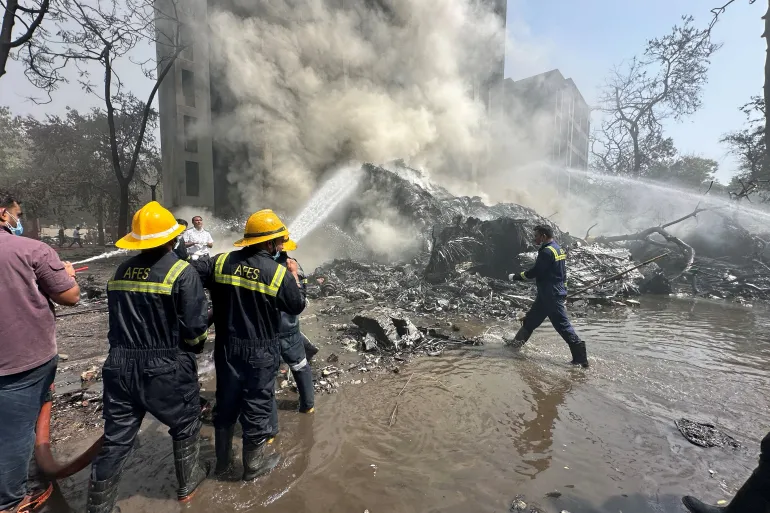US President Donald Trump has extended condolences and offered support after an Air India Boeing 787-8 Dreamliner crashed shortly after takeoff from Ahmedabad, killing nearly all 242 people on board. The aircraft, en route to London, was carrying 232 passengers and 10 crew members in what is now considered one of the most devastating aviation tragedies in history.
Speaking at a press briefing in Washington DC, President Trump described the incident as “horrific” and assured that the United States stands ready to assist in any way possible. “It was a horrible accident. Anything we can do, we will do,” he said.
Trump noted that preliminary observations suggested the plane may have lost engine power. “We saw the plane—it looked like it was flying pretty well. Didn’t seem like there was any explosion. Just looked like the engines maybe lost power. That was a terrible crash,” he stated. While there are reports of a few possible survivors, officials have yet to confirm any names or numbers.
The tragedy adds further strain on American aircraft manufacturer Boeing, already facing intense scrutiny over production issues and past safety failures. The Dreamliner 787-8 model had, until now, maintained a strong safety record and had never been involved in a fatal crash.
Boeing’s stock dropped nearly 5% following news of the incident, while shares of key suppliers like Spirit AeroSystems and GE Aerospace—maker of the plane’s engines—also declined by about 2%. In a brief statement, Boeing said it was aware of the incident and was working to gather additional details.
The 787 Dreamliner line had previously faced issues in 2013 related to battery systems, leading to temporary grounding, but no injuries were reported at the time. Boeing’s 737 MAX series, however, has a troubled history, including two fatal crashes that led to years of grounding and production setbacks.
Investigations into the Ahmedabad crash are underway, with aviation experts emphasizing that determining the cause will take time. Potential causes in such disasters range from technical failure and pilot error to environmental factors or mechanical defects. As investigators begin piecing together the final moments of the ill-fated flight, global attention remains fixed on the safety standards of modern commercial aviation.
